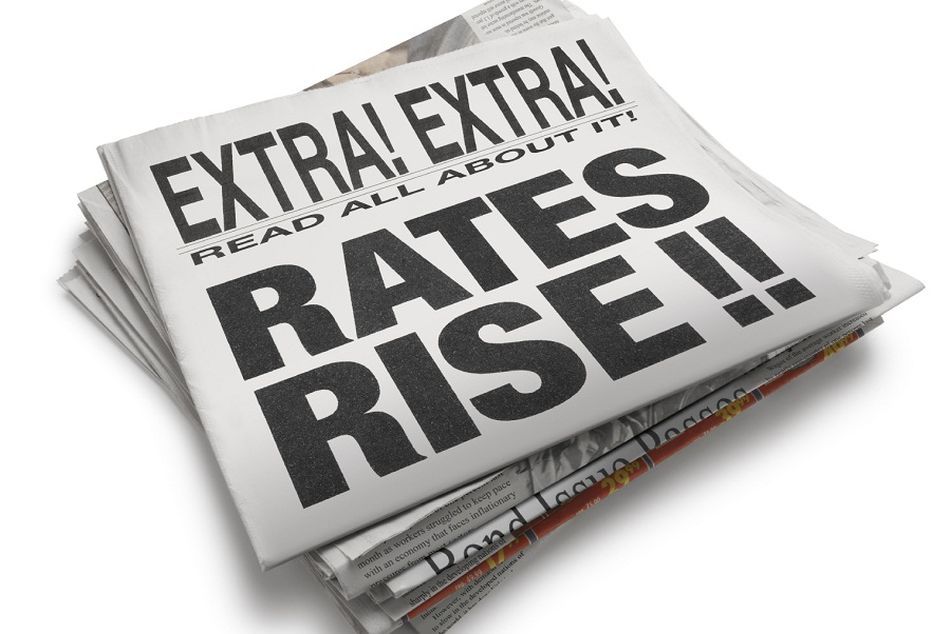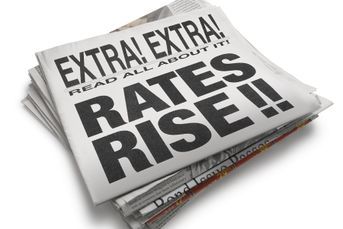Investing in a rising-rate environment

Energy, utilities, REIT and health care sectors are likely to outperform as Fed starts to tighten.
I frequently remind myself of the inherent differences between traders and investors. Traders are more concerned with day-to-day price movements. They jump in and bail out, often at the wrong times. Investors, meanwhile, are focused on finding value for clients over the long term. Behaviorally, they adjust their portfolios less frequently and more strategically.
As an investor, I see many potential opportunities across geographies and asset classes that should start to emerge now that the Federal Reserve has begun to raise interest rates for the first time in nine years.
History shows U.S. equities usually rise in the first two years after the Fed begins a tightening cycle. And while we have upside in U.S. stocks, I’d think that we should expect a return of about 15% over the next two years.
Taking a closer look, our research shows that the energy, utilities, REIT and health care sectors have outperformed the broad market over the first two years of the last three Fed rate-hike cycles. Using the same lens, we find that small caps have outperformed large-cap stocks and growth has done better than value for the first 12 months after the Fed begins to tighten.
EUROPEAN EQUITIES
That said, the ratio of the total U.S. equity market cap to GDP is higher now than at any post-1950 bull market peak save the Internet bubble back in 2000. And when you start to look at the total market cap to GDP ratio in European countries, they’re very close to their historical means. Given that the European Central Bank remains committed to accommodative monetary policy and the United States has entered a rising-rate environment, European equities will probably outperform U.S. equities in 2016.
We also see the price/earnings ratio for emerging markets equities relative to developed markets approaching a level not seen since the financial crisis. This does not necessarily mean there will not be more pain, but emerging markets could bottom as early as March based on the historical pattern in which emerging markets typically bottom three months after the Fed begins to tighten.
While other equity markets may offer investors better relative opportunity, the bull market in domestic equities should continue, primarily because the growth outlook for the U.S. economy continues to be supportive. Ongoing labor market improvements, low debt levels and falling energy prices will assist the American consumer, which we expect will continue to support U.S. economic growth in 2016. Our projections show that a warmer winter resulting from a historically strong El Niño weather pattern could also be a boon. Previous strong El Niños have boosted U.S. GDP by 1.0-1.5%.
COMMERCIAL REAL ESTATE
Another driver of U.S. growth has been real estate. The amount of building activity in commercial real estate is roughly in line with the absorption rate, and we are only about midway through what historically has proven to be a consistent 18-year cycle in real estate. While valuations are getting frothy, commercial real estate should continue to be a strong performer in 2016.
Elsewhere, in currencies and commodities, the divergence in monetary policy between the U.S. and the rest of the world likely will lead to dollar strength and ongoing downward pressure on commodities in the near term. While we are inching toward the endgame in the decline of energy prices, it’s not over. The last leg of a downtrodden energy market like this is usually one of the most dramatic parts, but we expect energy prices to find a bottom in 2016. It is time for long-term investors to become constructive on the energy sector and add names selectively to their portfolios.
HIGH-YIELD OPPORTUNITY
In credit, the recent sell-off in high yield, while painful for traders, presents an attractive buying opportunity that ultimately will prove rewarding for patient investors. A look at the first year of Fed rate-hike cycles since 1985 shows bank loans tend to deliver average returns of around 6%. On a risk-adjusted basis, a diversified portfolio of single-B bank loans that currently yield around 8% on average offers a superior risk-adjusted return relative to stocks.
It is also important to note that the average return in Morningstar’s bank loan category has been positive in all but one of the last 20 years. That is a pretty good track record for investors to consider.
Scott Minerd is chairman of investments and global chief investment officer at Guggenheim Partners.
Learn more about reprints and licensing for this article.






